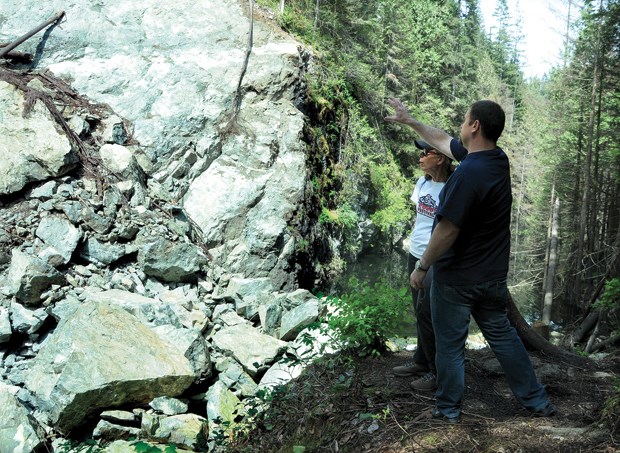The Seymour Salmonid Society is expecting to hear any day now whether they’ll have permission to begin using low-velocity explosives to break apart the 50,000 cubic metre rock slide that made the Seymour River impassable for fish.
Metro Vancouver, which has jurisdiction over the river, is the only remaining agency yet to sign off on a five-year, $1.25-million plan to crack the boulders open and allow the natural flow of the river to disperse the debris into the canyon below.
In the meantime, the society is headlong into a stop-gap measure that will help the salmon and steelhead survive and spawn until the river is open again.
“We were lucky enough to get a financial grant from the Pacific Salmon Foundation and the fish fence now is being built with the use of volunteer labour,” said Shaun Hollingsworth, Salmonid Society president.
Volunteers are hoping to install the fence on the river near Maplewood Farm by the end of this month – in time for this summer’s returning coho salmon.
In 2015, volunteers kept the river’s life cycle intact by physically trapping and trucking fish up above the land slide. The fence should make that job much easier.
“The fish got up into the canyon and we had a terrible time retrieving them with nets,” Hollingsworth said. “This year, we’ll put the fence up and that will stop the fish from going any farther.”
The artificial barrier will be adjustable with an inflatable bladder, which will allow kayakers and debris to safely pass over the top.
The fence is expected to cost just under $30,000. It’s being built on nearby Squamish Nation land. First Nations are partners in the project, along with the District of North Vancouver, the province, the federal government and Metro.
As for the blasting proposal, the federal government has put up $70,000 for the project so far, and North Vancouver’s two MLAs recently arranged for another $50,000. The society has been attempting to raise the rest of the funds through grants and donations to save the river, which the Outdoor Recreation Council of B.C. added to its list of most endangered rivers this year.
Since the rock slide salmonid crisis, the society has ballooned to roughly 800 volunteers offering to help out.



